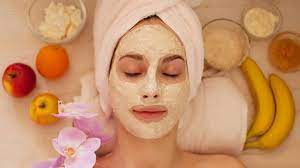In a world saturated with beauty products and cruelty free trends, understanding the science behind skincare can be both fascinating and essential. Skincare isn’t merely about cosmetic enhancement; it’s a holistic practice that merges art with science to maintain and improve the health of our skin. This article delves into the intricate world of skincare, exploring its science, techniques, and the artistry behind achieving a radiant complexion.
The Science Behind Skincare
1. Understanding Skin Layers
Our skin is a complex organ consisting of three primary layers:
- Epidermis: The outermost layer that acts as a barrier to protect against environmental aggressors.
- Dermis: Located beneath the epidermis, it houses blood vessels, nerves, and collagen, providing strength and elasticity.
- Hypodermis: The deepest layer, composed mainly of fat and connective tissue, which cushions and insulates the body.
Each layer plays a crucial role in skin health, influencing how products are absorbed and how skin reacts to various treatments.
2. The Role of Skin pH
Skin pH is a measure of how acidic or alkaline the skin is. The ideal pH of skin is slightly acidic, ranging from 4.5 to 5.5. This acidity helps maintain the skin’s barrier function and microbial balance. Disruptions in pH can lead to issues like dryness, irritation, or infections. Using pH-balanced products ensures that the skin’s natural balance is maintained.
3. Key Skincare Ingredients
- Hyaluronic Acid: A powerful humectant that attracts and retains moisture, keeping skin hydrated and plump.
- Vitamin C: An antioxidant that protects against environmental damage and brightens the complexion.
- Retinoids: Compounds that promote cell turnover and collagen production, reducing signs of aging.
- Niacinamide: Known for its anti-inflammatory properties, it helps with redness and uneven skin tone.
The Art of Skincare
1. Crafting a Routine
Creating a personalized skincare routine is akin to crafting a work of art. It involves:
- Cleansing: Removing impurities without stripping the skin of its natural oils.
- Toning: Balancing skin pH and prepping it for better absorption of subsequent products.
- Treating: Applying serums and treatments targeting specific skin concerns.
- Moisturizing: Locking in hydration and creating a protective barrier.
- Protecting: Using sunscreen to shield the skin from harmful UV rays.
2. Adapting to Skin Changes
Just as an artist adapts their technique based on their medium, skincare should adapt to the changing needs of your skin. Factors like age, climate, and hormonal changes can influence skin condition. Regularly reassessing and adjusting your routine ensures continued effectiveness.
3. Embracing Holistic Practices
Skincare is not solely about topical treatments. A holistic approach includes:
- Diet: Consuming a balanced diet rich in antioxidants and healthy fats can enhance skin health.
- Hydration: Drinking plenty of water supports overall skin hydration.
- Sleep: Quality sleep is vital for skin repair and rejuvenation.
The Future of Skincare
The skincare industry is evolving rapidly, with advancements in technology and formulations leading the way. From personalized skincare solutions based on genetic analysis to the rise of sustainable and eco-friendly products, the future promises innovative approaches to skin health.
In conclusion, skincare is a dynamic blend of science and artistry. Understanding the scientific principles behind skin function and ingredients, while also embracing the creative aspect of crafting a personalized routine, can lead to a healthier, more radiant complexion. As we continue to explore and innovate, the journey of skincare remains an exciting and ever-evolving field.





